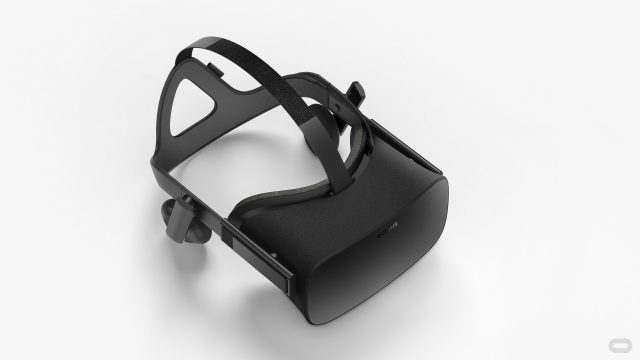
Enlarge / Trying out a nonfunctional Glyph prototype at CES 2015. Props to the Avegant people, because the shipping model looks pretty much exactly like this. (credit: Lee Hutchinson)
| Specs at a glance: Avegant Glyph Founder's Edition | |
|---|---|
| Display | Twin 1280×720 MEMS DLP |
| Field of view | Approximately 40° |
| Inputs | MicroHDMI (audio and video), stereo mini headphone (audio only), microUSB (charging) |
| Battery | 2060mAH Li-Ion (advertised 4 hour life) |
| Head tracking | 9 axis IMU |
| Price | $699 US |
| Availability | 8-10 weeks |
The Avegant Glyph is a screen that you wear on your face. That’s the simplest way to describe it. The whole device looks like a pair of outsized Beats headphones, complete with huge chunky body and thick plastic headband; the parts that go on your ears are indeed headphones, but that huge headband hides a 720p DLP screen (though "screen" isn’t quite right, as we’ll see) and the optics necessary to make the display work.
When you put it on, you look a lot like you’re wearing someone’s parody of what a VR headset is supposed to look like (personally, I think the effect rather resembles the popular "cyber woman with corn" stock photo). But the technology actually delivers a very high fidelity image—and for a first-generation hardware project borne of a Kickstarter, even delivering a product at all can be considered a success. Viewed through that lens, the Glyph is a hit.
But after spending a week with a "Founder’s Edition" version of the headset, I’m not entirely sure I’d want to spend the money for one—and it might not be for the reason you’re expecting.









